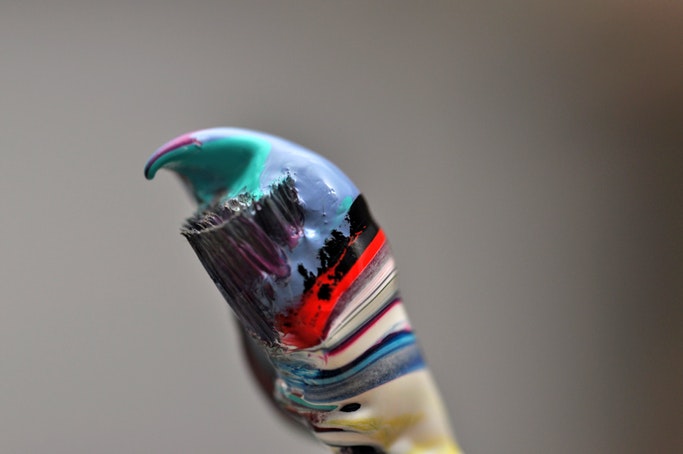
I loved trying to mix different media and came to a lot of neat combinations. For example I realized that sharpie and acrylic are great together. Even years later my paintings still look fine with no purple fading in the blacks.
Now I actually use the more art friendly versions of artist sharpies which produce a nice deep black, but if the regular ones work for you use them. The sharpie oil based paint pens are better than just the traditional old sharpies but not perfect. Just a darker black.
Now when I use them I outline first with sharpie then go over in paint pen. And I have never had color or smearing issues while sealing them.
I would also suggest giving the sharpie a day or so to dry before glossing.
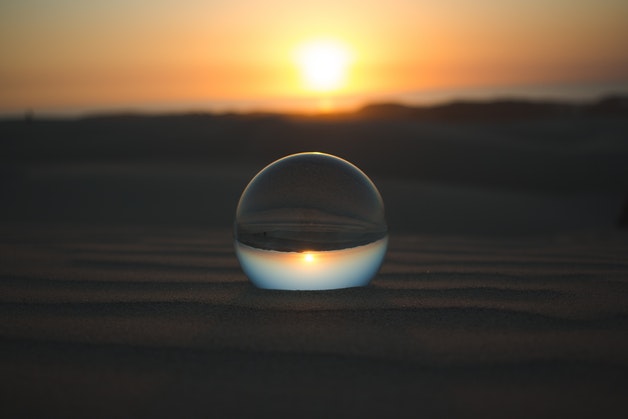
My best advice is work in a multitude of mediums.
That is why I have painted in just about anything that you can actually paint in. Ink was one the first mediums that I tried after I worked in oils and acrylics and it was a lot of fun. But it felt like I needed to learn more with ink than I did with other properties. The physical difference between inks and paints is that paint is a liquid medium with tons of tiny flecks of solid pigment suspended in it.
Inks are a liquid medium with a liquid pigment.
So ink can be thinned down virtually forever and can be used to mix with the liquid base for paint to produce interesting effects.
One thing to be aware of with inks is if you are using them to do layering/shading you can get bleed through if you try to cover them and they are not /completely/ dry. They're translucent paints you can use to to help "glaze" strong colors over the top of other paints without destroying the light and dark tones. Inks are pretty translucent and they will not darken the area in the way that washes do.
This is why I will still mix in ink to make final piece. It was this major moment when I relied how easy it would be to darken an area for painting shadows. I simply use a wash. If you want to change the color of an area without darkening it, use an ink.
And if you wonder what type to use, India or Sumi-e, remember; India ink- bottles, has a better consistency to it than Sumi-e, it is also generally darker although this can depend on the brand. But it does come in more colors than Sumi-e. The colors are really concentrated so they look very bright and crisp. If you need it to be more dull and muted, simply add water to it. Forget the sumi stuff.
Speed painting is a misnomer, and it gets a lot of people tricked into thinking that they are good at something that they do not understand.
You need to learn the fundamentals first, the speed comes from understanding of the fundamentals. Speed painting makes people think that it is a skill they just go and learn, it sets them on the wrong path.
learn life drawing fundamentals and spend hours drawing from live models and reference.
The best way to dissect his style is to study it yourself, you need to come to your own understanding of it. But it's hard if you don't already know how to draw well. I am certainly not a good drawer either so unfortunately I can't say much besides that his style seems to resemble Japanese and American comic art somewhat, and probably uses a lot of the same technical processes.
Please don't just take my word for it though, question me, and explore.
Take the plunge.
The Golden Liquid acrylics are nice, and they have a small swatch on them showing the actual paint across a few bars of black so you can imagine the opacity of the particular paint. I use a wet palette when working with acrylics. Sometimes even a paint retarder, that slows down the speed at which they dry.
Golden really does dry really fast when applied in thin layers, but I've not had any problems covering even blacks up if you keep these high-pigment colors less thinned. For black, I mix my own, usually from ultramarine or pthalo blue and burnt umber. it gives the painting more life than a flat black from a tube. I don't by every color from Golden. For ochres, burnt umber and all of my whites I usually but Utrecht brand.
If you use a retarder the paint will dry a bit slower, which is essential if you plan to gradient or fade any of your colors; otherwise, you will have similar to posterized color changes. I do the same with the custom black, and I water them down.
One of the best things I learned for using acrylics is rubbing alcohol. It kind of melts or breaks down the paint and is great for keeping your brushes in tip top shape, as well as correcting mistakes that have recently dried.
Well the instructors always tell me, before you run off following "advice" make sure the person that told you knows what they are talking about. Give the last one a try, it will either work, or it won't.
Also I have realized that if you already have experience with oils, acrylics should be easy to grasp.
But There Is More To It Than That
Repetition does do wonders but having understanding of what lies beneath the skins helps even more.
A lot of people think art is just some magical talent you are born with while others are of the impression that you can just learn a few tricks and magically improve.
The reality is that it takes a whole lot of effort and repetition but also a lot of studying. Regardless of what other people think, you have to combine both to see the best results.
A lot of people struggle with combining the two.
Sometimes, it's hard to apply what you learn through a video or a class into what you draw. Alternatively they might practice their heart out but are stagnating because they aren't learning anything new.
The thing is the actual anatomy studying can be done within a month or two. I'm referring to what an artist needs to know, not a medical professional. The next step is a life long journey of studying the human figure visually. The more figures you draw the more you pick up on. The challenge is in learning just a little bit and then applying that through practice. What or how much that 'little bit' is and for how long one needs to practice that varies from person to person, which is why it is so difficult to have a clear cut method that works perfectly for everyone.
The more figures you draw the wider your visual library becomes as well, so you will need less visual reference, and can focus on building up other aspects of your visual library.
Take Alex Negrea for example, he is a professional character design artist and he has a video out on how to build a visual library.
It pretty much comes down to just doing tons and tons of studies.
Once you understand the form and design of something you don't have to spend an extra 30 hours to make it photo real. Sometimes just an hour study is enough to really understand something. He recommends doing lots of somewhat clean line drawings but if you need to understand how the object is effected by light you'll need to do color/value roughs.
I would say that learning how to do art better is just as important as just drawing a lot. But it is much easier to learn too much and not practice enough. So if you're not sure if you should study or just draw, chances are you should draw. If you are feeling uninspired it can be helpful to learn more techniques and become inspired by the new knowledge as they will ultimately open up new paths for you to take.
Take a look at where you are today. You've got another thousand lousy drawings in you. That's how it works, we all have to make those thousand lousy drawings. The sooner you get them out the better. Get some vine charcoal, a kneaded eraser, and an 18 x 24 pad of paper and work like that for a while. It will help you to loosen up.
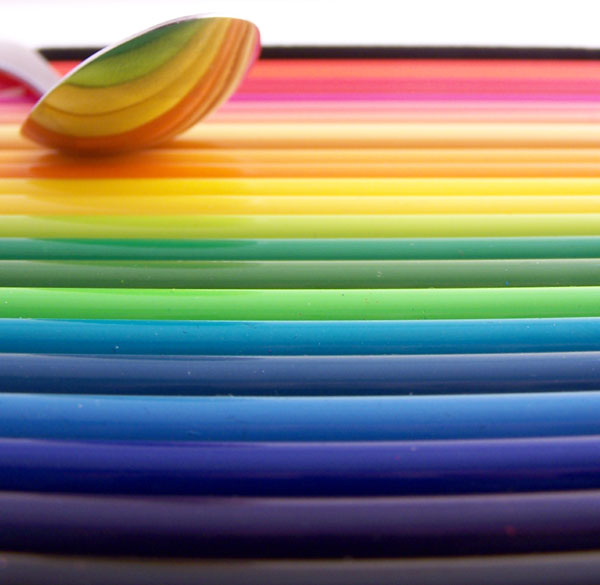
Don't be discouraged is the first thing I will tell you.
Second thing I will say is, practice, practice, and more practice. Learn as you go and watch others paint. Try and understand the techniques that they are using, and why they are using it. Once I understood what they were doing and why, I then tried what they had done and it worked out.
And because of this reference I have gotten way better than what I used to be.
Shake the paint, I try and shake for maybe about a minute or more. I think that with acrylic you really miss out on so much if you just leave it be. And it has a lot of versatility.
I knot that another thing that helped me was to thin my paints. People will tell you this all of the time, but how do you thin your paints? They don't explain how to do that, so you will end up with runny over watered down paint.
It looks awful.
This is how I thin my paint so it flows nicely. Wet your brush by putting it in water and wiping it off on a paper towel. You might have to do it multiple times. Try to keep it damp. Dip the brush into the paint then dip the tip of the brush, just the very tip, into the water. Then apply the paint to the model moving it around a good amount to cover as much as you can. When it gets a little dry, repeat the process.
Don't be afraid to try different ranges of paint from different companies. I know that when I started painting, I got stuck on a brand. I swore by it, but then I realized that I was really limiting myself.
Protip for the clean freaks: If you are using acrylic paint and you want to remove it, 91% rubbing alcohol will do it pretty quickly. A good scrub with a stiff bristle toothbrush and then a washing will get most if not all of it off.
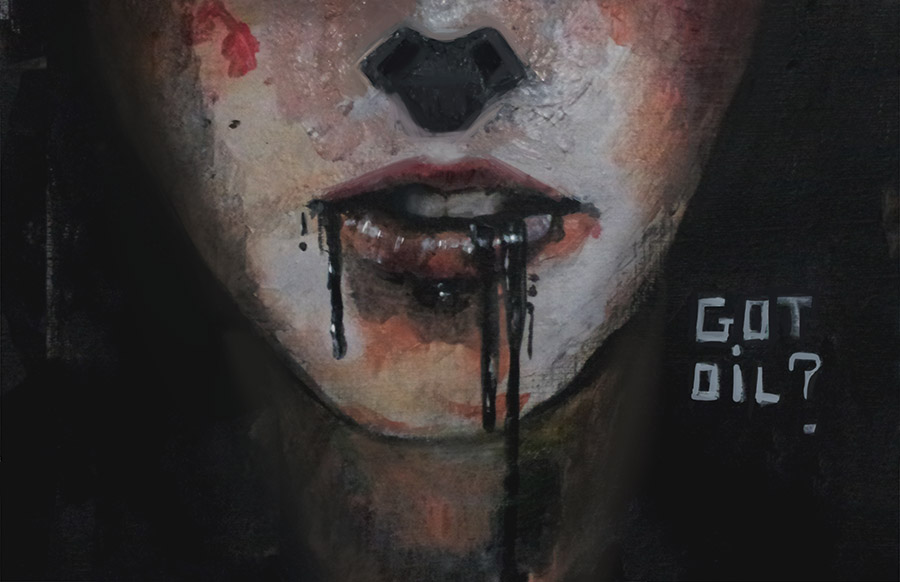
My personal preferences with paint medium vary based on my mood, and desire to exprese myself. But a lot of people only think that there are two types, acrylic or oil.
I can make my oils dry as fast or slow as I chose by using different mediums.
Products like Liquin and galkyn speed dying to as fast as acrylics, but the translucent quality is not lost. Linseed oil (among others) will slow drying time. Oils have a glow to them. They flow and blend and move like nothing else. They are the most forgiving of the art mediums and you can easily scrape up you mistakes.
With oils I can make my palette last over a week without putting out new globs of paint so i waste far less. I do this by freezing my pallet in a ziplock when I'm done. I have tubes of some colors that I've had for years without running out even with semi-frequent use.
For my acrylic palettes I will place them on a baking sheet with a towel under them, then I will make sure that the towel stays moist. This will also make a palette that can last over a week.
Safety is a concern for many. And while the information doesn't apply one-to-one for oils and acrylics. Safety should be used when working with either of them. Oils are safe so long as you use odorless thinners, keep am air flew when using potent smelling mediums, keep paint brushes and paint brush handled out of your mouth, and never use thinner to clean hands.
And you can mix the two types of paint when done in the right order.
Acrylic can be used as the under layers for an oil paintings layouts. Never the reverse though. Also never use your acrylic brushes for oils then return them to acrylics. Just use one set for oils and one for acrylics.
To make my life easier i buy cheap latex gloves and use one for my right hand. Its inevitable the brush handles get into paint and then into your hands. Makes clean up a lot easier!
This is my second tour. I took one with my Aunt and Uncle when I graduated high school, and now that I am getting ready to graduate college plan to take one with my best gurl friend Payton. We're planning on spending the bulk of my time in Whistler but would like to travel before or possibly after. We will be staying in hostels and doing the whole trip by bus which suites our price class the best. We really want to go hiking but not spend the night on a trail, just have the opportunity to enjoy the scenic views.
When I went with my aunt and uncle I actually didn't have the right gear. I got stocked at Mountain Warehouse. I've heard Mountain Warehouse called the Old Navy of the outdoors, which I think is about right!
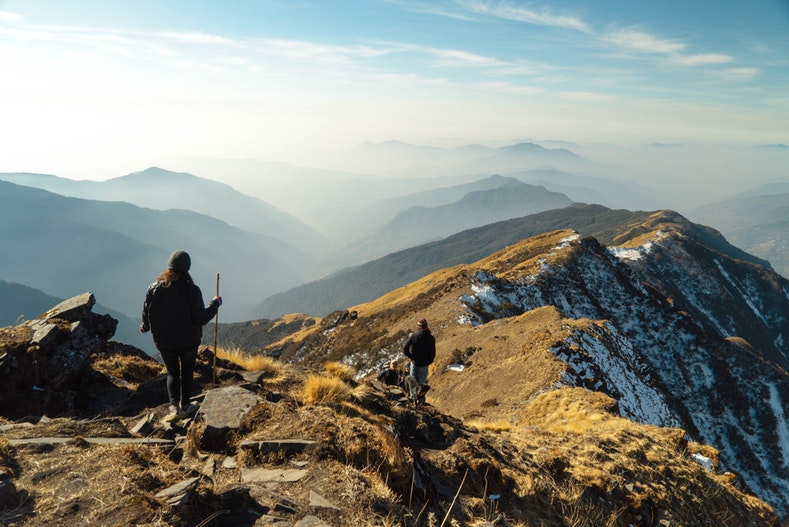
It's fine for a few wears, but don't expect everything to hold up. Most of my gear got retired after the trip. I did keep a couple of pieces, but well, I have a rain shell that definitely isn't as waterproof as the tag suggests. I have a puffy that definitely isn't as warm as the tag suggests.
I think in general their gear is serviceable if you understand that you aren't quite getting a top-of-the-line product. It can feel a bit cheap...the sewing isn't great, the velcro is weird, there aren't a lot of nice little extra features, that sort of thing. However, their better pieces aren't that much cheaper than brands with better reputations. If you want something that is going to get you through a weekend, Mountain Warehouse is probably fine. If you want to hike/camp regularly, you might as well purchase stuff that will last longer, or else you're buying everything twice.
That said, Mountain Warehouse's merino layers aren't much cheaper than brands like Icebreaker, except Icebreaker has a good reputation and a good returns policy.
The actual savings are pretty negligible in the bigger picture.
The final word, look at what you can afford. You don't need quantity, you need quantity. Shop around and buy accordingly.






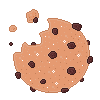 Now it is time for a cookie!
Now it is time for a cookie!